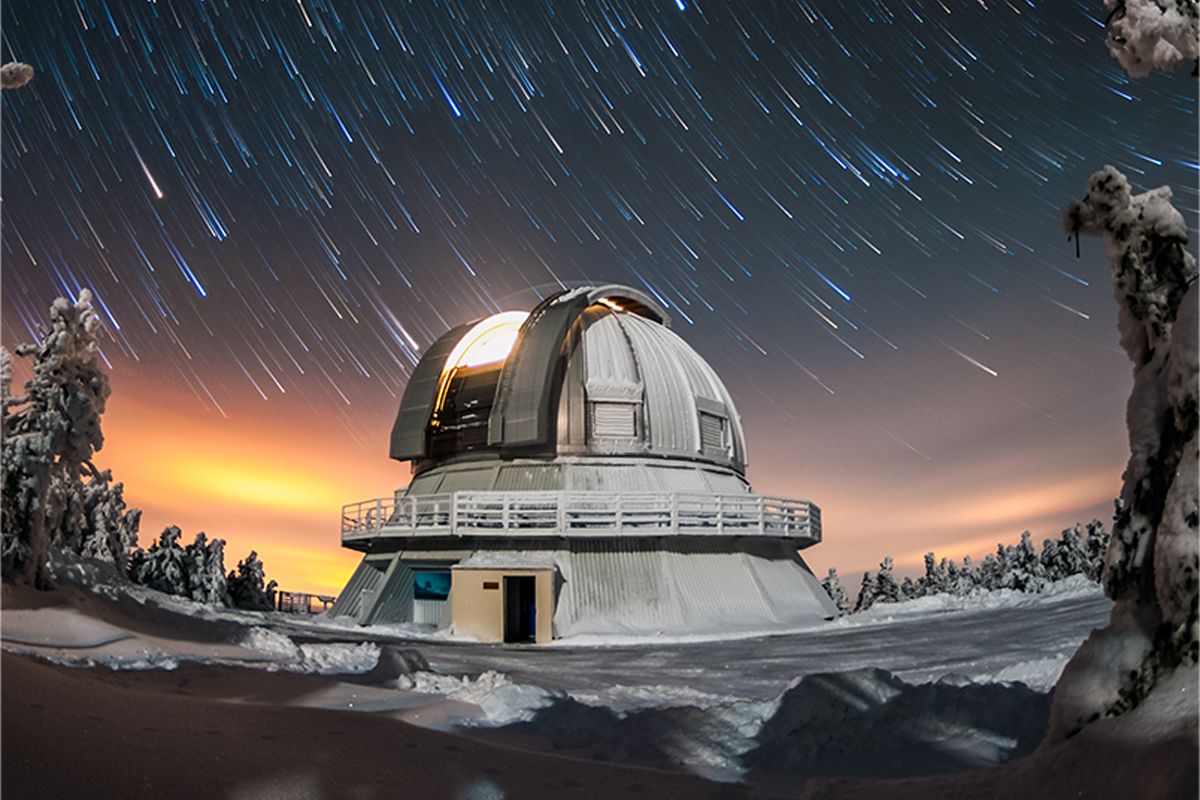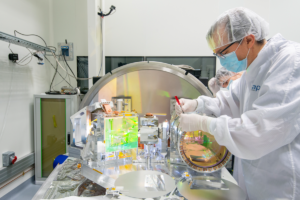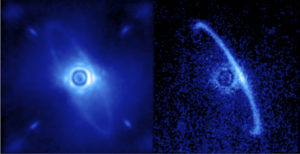Research Topics at the OMM

At both the Experimental Astrophysics Laboratory and the Mont-Mégantic Observatory, significant contributions are being made to the fields of astrophysics research and instrumentation. The diverse range of research conducted at these facilities touches on various topics within astronomy, where researchers are engaged in cutting-edge work, from the study of distant stars to the exploration of exoplanets and extragalactic space. Below, we describe some of the fundamental questions that research at the OMM’s facilities aims to answer:

Pictured here is the installation of one of the temperature probes on the camera for SPIP, a twin instrument to SPIRou. Credit: S.Chastanet – CNRS/OMP
What is out there?
Fostering research into astronomical instrumentation directly impacts our ability to explore and understand the Universe. Improved instruments and technology help astronomers capture clearer images and gather more precise data, leading to groundbreaking discoveries. Advancements in this field enhance the quality and depth of our astronomical observations, driving scientific progress and expanding our knowledge of what lies beyond our “pale blue dot”.
How did we get here?
Exploring our own Solar System is important as it provides valuable insights into the formation and evolution of planets, including our Earth. By understanding the processes that shaped our Solar System, we gain knowledge about planetary formation, geological and atmospheric processes, and the potential for life beyond Earth. Studying our Solar System also helps us prepare for potential hazards, such as asteroid impacts, and informs future space exploration missions to other planets and moons.

The Gemini Planet Imager captured its first light image, showing a narrow ring of dust around the young star HR4796A. This ring likely contains dust remnants from planet formation, and some suggest it may be shaped by an unseen planet. The left image displays normal light, including the dust ring and starlight scattered by Earth’s atmosphere. The right image reveals only polarized light, eliminating unpolarized starlight and highlighting strongly polarized light from the disk’s back edge.
Credit: Processing by M. Perrin, STScI.
Are we alone in the Universe?
Studying exoplanets helps us answer a fundamental question: Are we alone in the universe? By examining distant worlds, we can collect clues about the potential for life beyond Earth. Studying exoplanets also provides insights into the diversity of planetary systems, their formation, and the conditions that might support habitable environments, further expanding our understanding of the Universe around us.
Where do we come from?
Stellar physics, or the study of stars, is crucial for understanding the fundamental building blocks of the Universe. It helps us uncover the mysteries of how stars are born, live, and ultimately die, shedding light on our own Sun’s behaviour. Through studying other stars, we gain insights into the past, present, and future of our Solar System and other star systems.
What is the fate of our galaxy and our Universe?
Exploring the rich diversity of galaxies that exist beyond our own and the large scale structure of the Universe reveals our own cosmic story. Galaxies are like colossal cities of stars, and by studying them, we are able to learn about the large-scale life cycles of stellar populations. Studying cosmology, or the structure of the Universe, allows us to understand the Universe’s origin, evolution, and fate, shedding light on the Big Bang and the very nature of space and time. This research touches on some of the most elusive mysteries of space (for example, what is the nature of dark matter?) while shedding light on the fundamental questions of where we come from and where we’re headed.